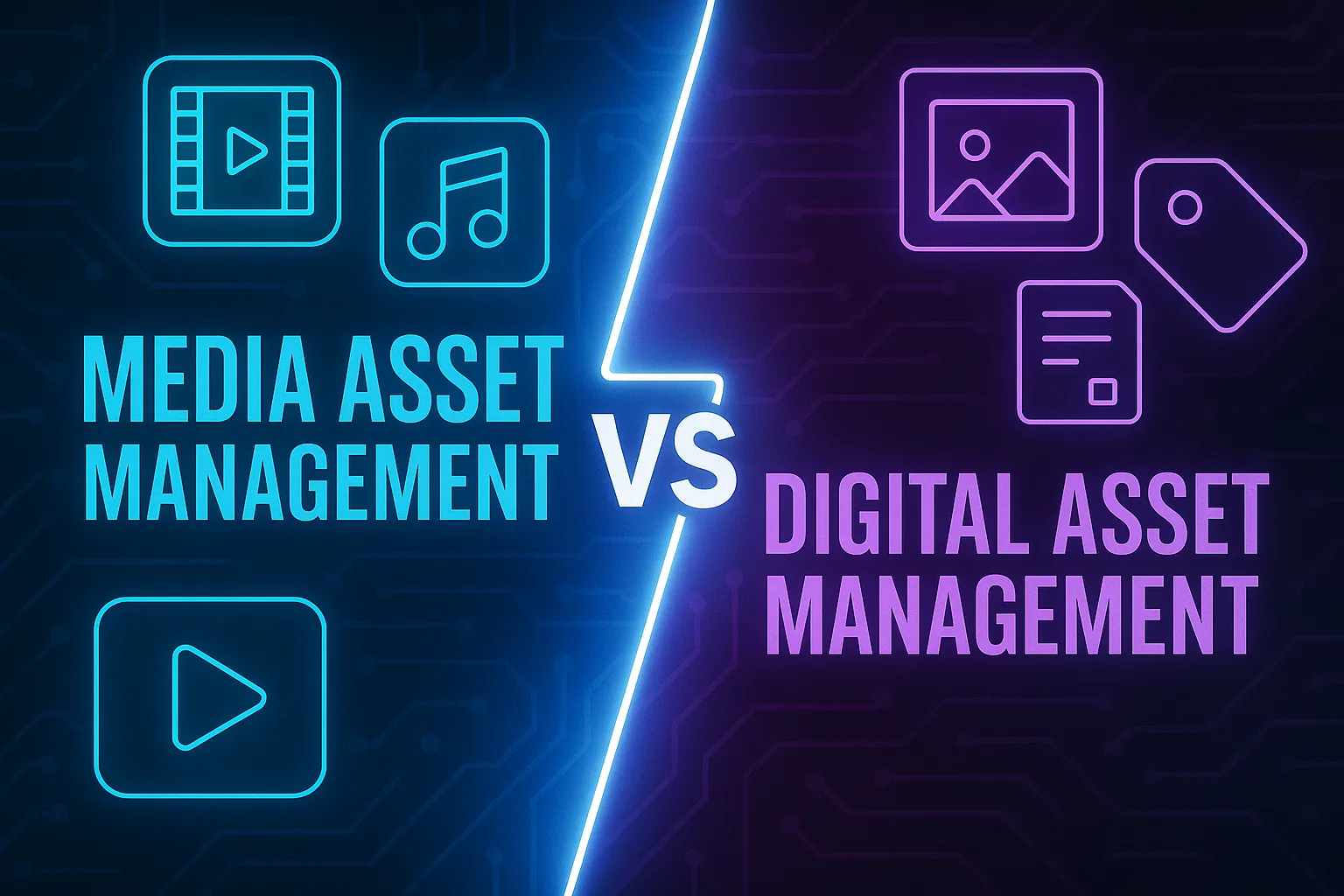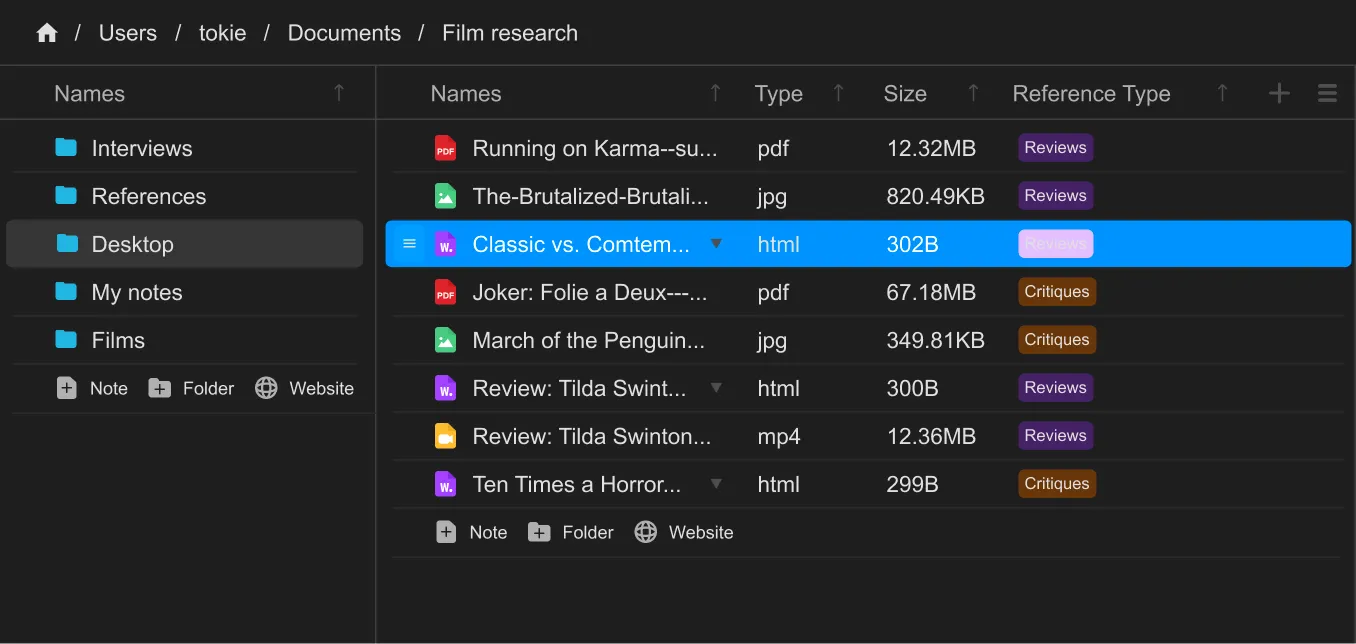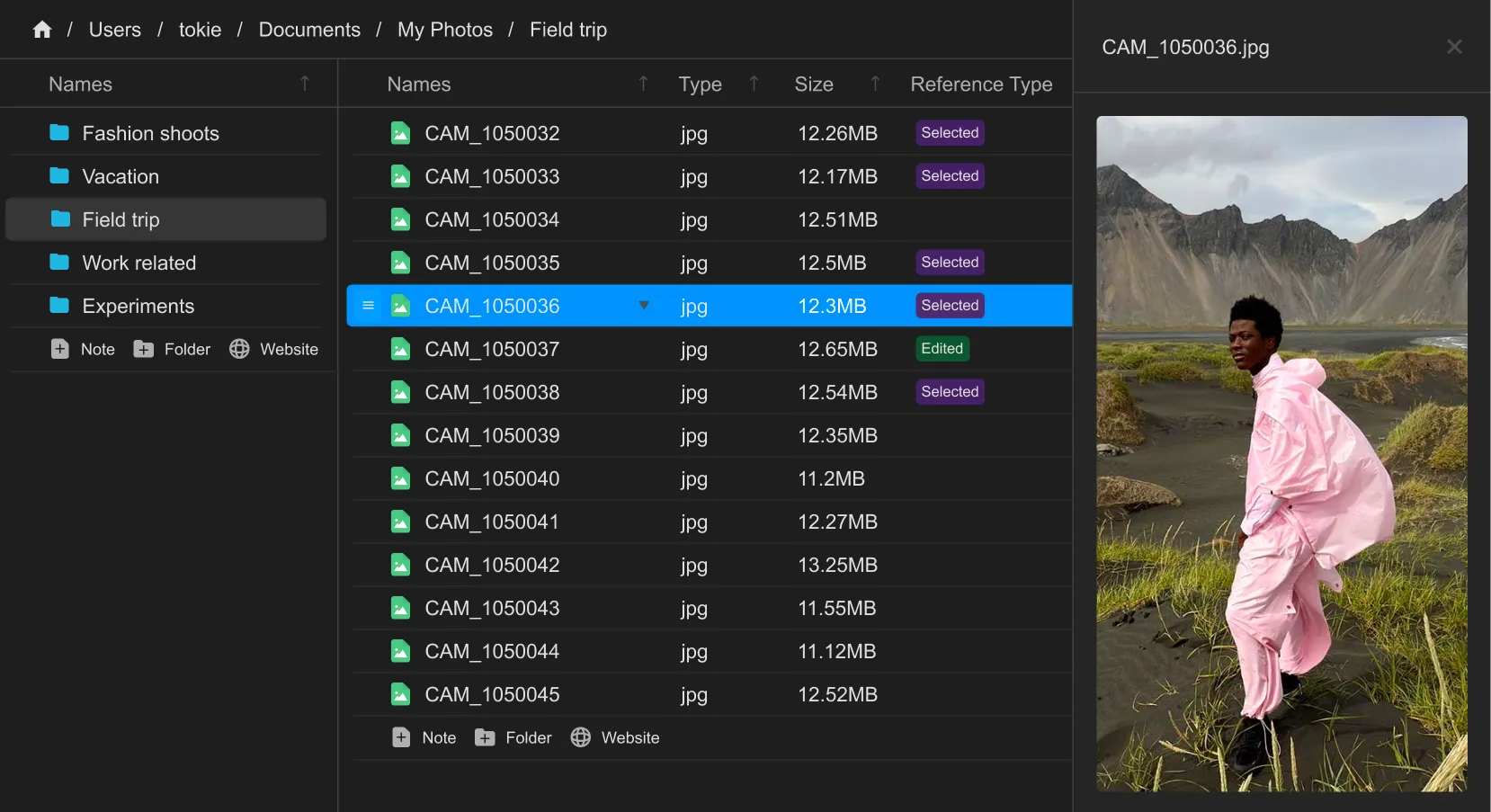Media Asset Management Explained: When MAM Beats DAM (and Vice Versa)

Media Asset Management Explained: When MAM Beats DAM (and Vice Versa)
Digital teams are swimming in content. From video files to brand logos, from marketing PDFs to raw audio takes — managing it all requires more than just cloud storage. That’s where MAM and DAM come in.
But what’s the difference between Media Asset Management (MAM) and Digital Asset Management (DAM)? And more importantly: when should you use one over the other?
Let’s break it down.
What is Media Asset Management (MAM)?
Media Asset Management (MAM) is a system specifically designed to handle rich media files — think video, audio, and complex production assets.
MAM tools are popular in media-heavy industries like:
- Film and TV production
- Broadcasting
- Sports content management
- Video marketing teams
They don’t just store files — they also handle metadata tagging, transcoding, version control, and timeline previews, often integrating directly into video editing software like Adobe Premiere or DaVinci Resolve.

What is Digital Asset Management (DAM)?
Digital Asset Management (DAM), on the other hand, is broader.
DAM systems manage all types of digital files — including images, documents, presentations, and media files. They’re often used across marketing teams, sales enablement platforms, and brand libraries.
Key DAM use cases include:
- Centralized brand asset storage
- Version control for marketing collateral
- Usage rights and licensing management
- Easy asset sharing across departments
Key Differences Between MAM and DAM
| Feature | MAM | DAM |
|---|---|---|
| Focus | Rich media (video, audio) | All digital files (including media) |
| Transcoding support | ✔️ Built-in | ❌ Often absent or basic |
| Video preview timelines | ✔️ Yes | ❌ Usually not supported |
| Integration with editing tools | ✔️ (e.g. Adobe, Avid) | ❌ Not a core focus |
| Metadata handling | Deep, technical (frame-level) | General tagging and keywords |
| User base | Media producers, editors | Marketers, sales teams, brand managers |
When MAM Beats DAM: 3 Scenarios
🎬 1. You're managing tons of video content
If your workflow involves ingesting, editing, approving, and distributing video — MAM is a must. It handles frame-accurate metadata and editing timelines natively.
🎧 2. Audio workflows matter
In music production, podcasts, and broadcast media, MAM shines by supporting multiple audio tracks, codecs, and audio-focused metadata.
📺 3. You need integrations with video editors
MAM often plugs directly into Final Cut Pro, Premiere Pro, and other NLE tools — allowing editors to access, edit, and publish without switching platforms.
When DAM Beats MAM: 3 Scenarios
🛍️ 1. You're managing brand and marketing assets
DAM is built for brand consistency. Think logos, ads, product shots, and brochures — all searchable and usable across departments.
📤 2. You need simple sharing and permissions
DAM tools are excellent for sharing assets with clients, vendors, and internal teams — especially with built-in access controls.
🧩 3. You want a broader file system
DAM can handle more than just media — it’s ideal if you also manage PDFs, presentations, design files, and spreadsheets.
Can You Use Both Together?
Absolutely. Many large teams use MAM for production and DAM for distribution.
For example:
- A film studio uses MAM to edit and manage scenes.
- Once finalized, the clips are pushed to a DAM system for marketing and PR use.
If your team spans both media production and marketing, a hybrid setup may be ideal.
Choosing the Right One for Your Team
Ask yourself:
- Do we work heavily with video/audio editing? → Lean MAM.
- Do we need to organize general digital assets across teams? → Go DAM.
- Are we looking for ease of use and scalability? → DAM is often more turnkey.
- Do we need technical workflows and codec control? → MAM wins here.
Tokie's Take: A Flexible Hybrid Approach
At Tokie, we’re building a file manager that doesn’t force you into rigid categories.
Whether you're managing raw video takes, PDFs, or website embeds, Tokie turns your folders into smart databases and workspaces.
Need custom fields for metadata? Want to peek inside media without opening new apps? Tokie supports both DAM-style and MAM-style workflows — inside your local folders.
Think of it as the lightweight hybrid that fills the gap between casual file browsing and professional asset management.

Conclusion
MAM vs DAM isn’t about which is “better.” It’s about which is better for your workflow.
If you’re working with high-volume, rich media, MAM gives you the control and depth you need. For broader teams that need easy organization and sharing, DAM is often the better choice.
Or maybe — just maybe — you don’t have to choose. Tools like Tokie are blurring the lines and bringing the best of both worlds together. Download Tokie at the bottom of the page.
Ready to try Tokie?
Transform your file management experience with Tokie's powerful features.